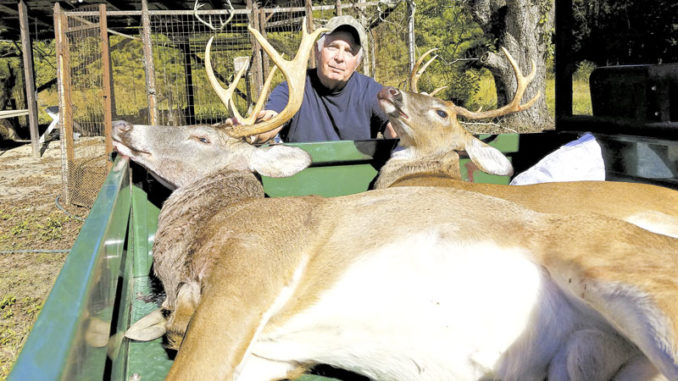
Big bucks move through several patterns during the first part of deer season, from early season patterns to the pre-rut and to the rut — the peak of the breeding season. Here’s how to keep up with them and stay on top of them.
Deer hunters pursue their quarry throughout the season, but many plan much of their hunting efforts around the period known as the “rut” — the time when does are most receptive for breeding in the greatest numbers, creating widespread deer movement by bucks and does.
Serious hunters dedicate many hours to putting the crosshairs on a big buck during the rut because it’s the time when something other than self-preservation and food dictates his movements.
While propagation of the species puts big bucks in harm’s way during the rut, simply sitting in a stand doesn’t ensure success. Deer don’t lose all their preservation instincts, and hunters with a good plan typically score consistently, while others often fail.
This window of opportunity for taking a big buck actually begins during the phase known as the “pre-rut” — immediately preceding the actual rut, when daytime buck activity begins to increase dramatically.
Trey Phillips of Summerton, S.C. is already a veteran deer hunter at age 36, having hunted with his dad since he was young; he now works as a professional guide. He is serious about hunting big bucks.
Along with his wife, Whitney, Phillips owns and manages the Clarendon Club, a 2,000-acre mecca for outdoor enthusiasts near South Carolina’s Lake Marion. He serves as scout and guide for hunting on the property, and as such, he’s worked out some solid techniques for hunting the pre-rut and the rut.
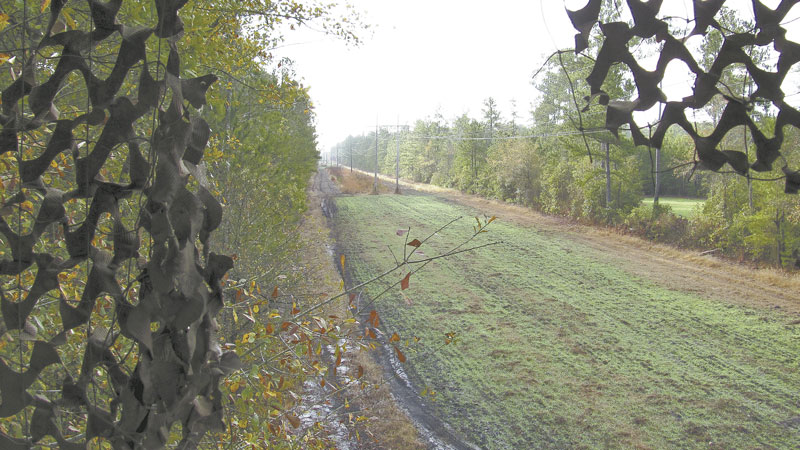
Proof of his success came last Oct. 13 when he killed a buck on his property that net-scored 150 4/8 Boone & Crockett points.
He had literally followed that buck since the previous year and learned some valuable lessons on that quest.
Phillips (803-460-9378) said one key to success is understanding that deer patterns change as the season progresses. Knowing when early season patterns morph into pre-rut — and when the pre-rut ends and the actual rut begins — enables him to move his hunting locations as deer move.
“To be consistently successful throughout the season, I have to hunt different areas during the seasonal progressions, because deer change locations,” he said. “The change is usually not significant in terms of distance, but it can be dramatic in terms of habitat and movement patterns. Often, the specific habitat is the key to the change.”
He said the pre-rut period begins when bucks break out of bachelor groups and begin checking for receptive does. The bucks are usually ready before most does, so they’re on the move, looking for the few early, receptive females. This changes a buck’s movements, because his purpose switches from eating and survival to propagation of the species.
“Although I’m extremely familiar with the property I hunt, land-management activities and even natural changes to a large tract of land can change deer patterns significantly from year to year,” he said. “You can’t rely on what deer did last year for this season. It’s a new game every year.”
Visual scouting from vehicles and ATVs, along with setting trail cameras across his property, are his preferred methods to track deer movements. He knows what he expects to see before the season but usually he experiences a couple of surprises.
“For example, I may be expecting to see deer move from an early season, food-source pattern to a specific pre-rut and rut territory used in previous years, but sometimes they never show up where I expect,” he said. “That’s where scouting, driving roads and scanning with optics and checking trail cameras combine to help me determine their movements.”
During the early season and pre-rut, he primarily tracks bucks, and many will be in bachelor groups in early season, although very large bucks may be loners. By October, Phillips said he watches for an individual buck trailing a doe and for areas with large concentrations of deer.
“I’ll know I’m in the right area if I’m seeing a lot of bucks and does,” he said. “That’s where patience is a key during both the pre-rut and rut if you’re targeting a trophy buck.”
Another highly successful hunter is Darrell Madden from Semora, N.C. , a 57-year-old member of the Redhead Pro Staff at Bass Pro Shops. He said timing is crucial when hunting the pre-rut and the rut.
“First, these phases can be dramatically different from one location in the Carolinas to another,” he said. “You can’t go by a specific date; you must observe these changes and react immediately for best results.”
Madden said that while the rut is certainly a prime time, the pre-rut can be awesome as well.
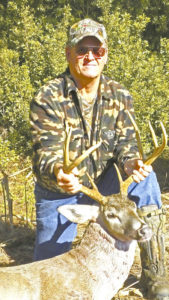
“Pre-rut begins when bucks break out of the bachelor groups, begin seeking does and making scrapes,” he said. “I’ll regularly check the woods and will not see many scrapes until the pre-rut kicks in. It’s kicks in quickly, and I may see zero or few signs one day, and return a few days later to the same area, and it’s full of fresh scrapes. The increase in scrapes means an increase in deer activity, but not all of the deer checking scrapes are bucks. Actually, many of the bucks at first are smaller bucks, based on my personal observation and trail-camera photos over the years.”
But a big buck can filter in at any time he said, so the area near these scrapes are certainly worth hunting. Madden said activity increases as more does become receptive and more big bucks join the game.
Madden said it’s crucial to remember that big bucks are very sensitive to hunting pressure, and early season pressure often puts them into stealth mode. This makes them more nocturnal, but as the pre-rut continues, more of these big bucks are seen during the day.
Selecting stand sites to match changing deer movements is crucial, he said.
“I’ll consider multiple factors and locate nearby food sources, places where a lot of deer are being seen, and proximity to major trails in that area,” he said. “Ideally, I’ll find the right place where I can see all of the above. A place like this may not be hot for long, as deer patterns may change again as deer enter the actual rut phase where most of the breeding occurs. When you find a hotspot, set up and hunt the area as soon as you can. I found these small areas can be red-hot places to see lots of bucks for several days.”
When Phillips sees an increase in bucks chasing does, he’ll begin to target areas where lots of deer are feeding.
“An abundance of does in a specific area, even if the attraction is food-related, become areas for good buck-hunting opportunity during the rut,” he said. “Does feeding in fields or food plots will attract bucks, and if you’re patient and play the wind right, it’s an excellent time to see and take a big buck.”
Phillips agrees that the pre-rut and rut changes considerably across the Carolinas, but where he hunts now near South Carolina’s Santee Cooper lakes the pre-rut typically falls into the Sept. 15 to Oct. 3 range. After that, the breeding active becomes widespread, and the rut is on.
“I prefer morning hunting for pre-rut and rut; I’ll set up near fields such as beans, corn and peanuts and will hunt well-used travel corridors in the nearby woods that lead to bedding or breeding habitat,” he said. “If I set up on a field before dawn, my hunt will be brief, a few minutes at first light, because deer will leave these open areas early. But hunting in the woods, I’ll usually see a lot of deer movement, and deer will filter through at a much more relaxed pace. I’m willing to be patient, because seeing a doe is a very good sign; a buck may be following.”
Phillip said in afternoons, he prefers hunting stands around large fields, cutover areas and power lines where he has long-distance vision. Bucks in the rut will chase does through these type habitats.
“But at long distances, I scan the area constantly, using quality binoculars to help me see what is happening even several hundred yards away,” he said. “I’ve seen bucks chasing at long distances and lose contact only to see them again much closer — and often within range — a few minutes later. The rut provides a great opportunity, but hunters must be diligent.”
Despite bucks letting their guard being down a bit, Phillips never sacrifices any of the typical scent control and wind strategies that are essential the rest of the season.
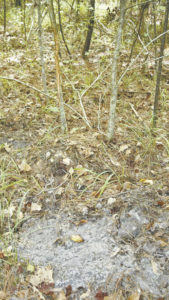
“If I put in the work to be in the same area as a trophy buck during the rut, I’m not going to risk losing the opportunity because I didn’t play the wind correctly,” he said. “I have enough stands where I can hunt a safe wind direction. During the rut, a hunter can’t predict precisely where that buck will be; the buck’s following a doe is or with a doe. Where she goes is where he goes, so I’ll be in a stand as near his core rut area as possible. But when the wind is right, I’ll be in the best stand for that deer based on my scouting and camera data.”
Phillips said when baiting anytime during the season, including the rut, his boots never hit the ground. When he puts out corn, he never leaves his 4-wheeler and simply goes from spot to spot. Leaving no human scent can only enhance his odds of success.
Madden said vocalization and rattling are good tactics to employ during the pre-rut and rut phases.
“I’ll grunt and bleat and imitate multiple deer in an area; that’s usually tempting for a buck to check out,” he said. “Grunts are good anytime in pre-rut and rut; however, rattling is one tactic I really like during the pre-rut. Bucks are establishing a pecking order of dominance, and by rattling, I’m simulating deer sparing, and that will usually attract other deer.”
Hunting any stand requires the consideration of scent and wind in any situation, but Madden said when employing rattling and vocalization techniques, you’re essentially inviting deer to come to your location, not just move through an area you’re watching. Being as scent-free as possible with the wind to your best advantage is crucial.
Madden said during the peak of the rut, hunting all day is some of the best advice he can give.
“Bucks will be focused on checking bedding areas, scrapes and even food sources, looking for a doe in estrus,” he said. “If a big buck is with a doe, and they breed, he’ll start looking for another. He’ll work travel routes checking scents where deer move. These are prime areas to be hunting during the rut. Stand placement will vary, whether you’re bow or gun hunting, but ascertain the prevailing wind directions for that area and time of year when selecting a stand site.”
Madden and Phillips agree that following changing deer patterns, scent and wind control and patience are the core ingredients to successfully hunting during the rut.
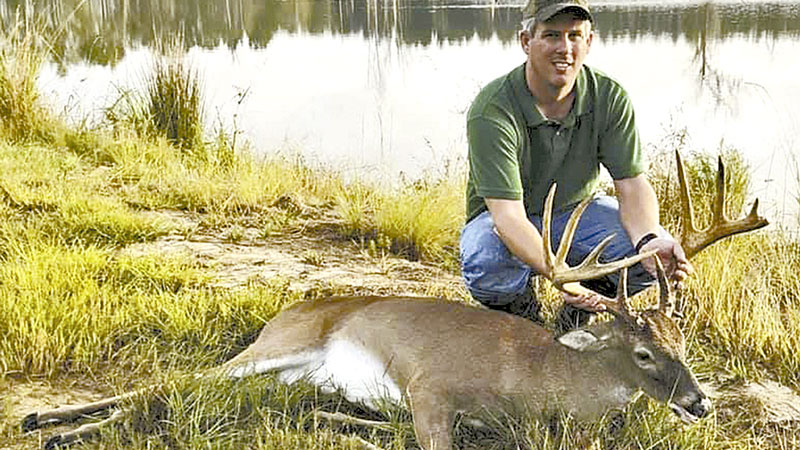
Patience is rewarded during the rut
Veteran hunters Trey Phillips of Summerton, S.C., and Darrell Madden of Semora, N.C., make repeated use of the word “patience” when discussing hunting during the rut, and with good reason. While it’s statistically the best time of the season to harvest a trophy buck, it’s still not an easy task.
“I sit long hours in stands and pass a lot of smaller bucks waiting on the deer I’m targeting,” Madden said. “But patience is often rewarded, not perhaps on a daily basis, but over the course of a season.”
Such was the case for Phillips in 2018 when he took what is he researched to be the second-largest buck scored in Clarendon County, an 11-pointer that netted 1504/8 Boone & Crockett.
“I actually saw this buck in 2017 when he was a solid 9-pointer, and I could tell by his age he had plenty of growth potential, so I passed on him twice,” he said. “When the rut began in early October 2018, I picked him up on cameras during the daytime and was able to define his core area.”
The actual hunt for the trophy began a week before Phillips killed the buck. He saw it on a trail camera that he checked remotely over his cell phone, and he hunted that stand hard for a few days, passing several excellent bucks. Then, he had trail-camera photos of the buck on a power line during daytime, and he immediately moved to that area.
“I hunted Friday and saw lots of deer and finally saw him at 1,200 yards, chasing a doe in the power line,” he said. “Saturday morning I was back and saw him at 400 yards chasing a doe, but he never offered a good shot. I don’t hunt on Sunday, so my next trip, I was back in the same stand very early. At first light I saw him at 100 yards, on the power line, facing me.”
Phillips said he took the shot but felt he missed the deer.
“I was tempted to go check for a blood trail but I trusted my instinct to be patient in case I had missed,” he said. “After two long hours, the 11-pointer walked back out into the power line and stood broadside at 200 yards, and I dropped him in his tracks. If I’d gotten down and started looking for a blood trail, I would have busted him out of the area and likely never seen him again — except on trail cameras.”


Be the first to comment